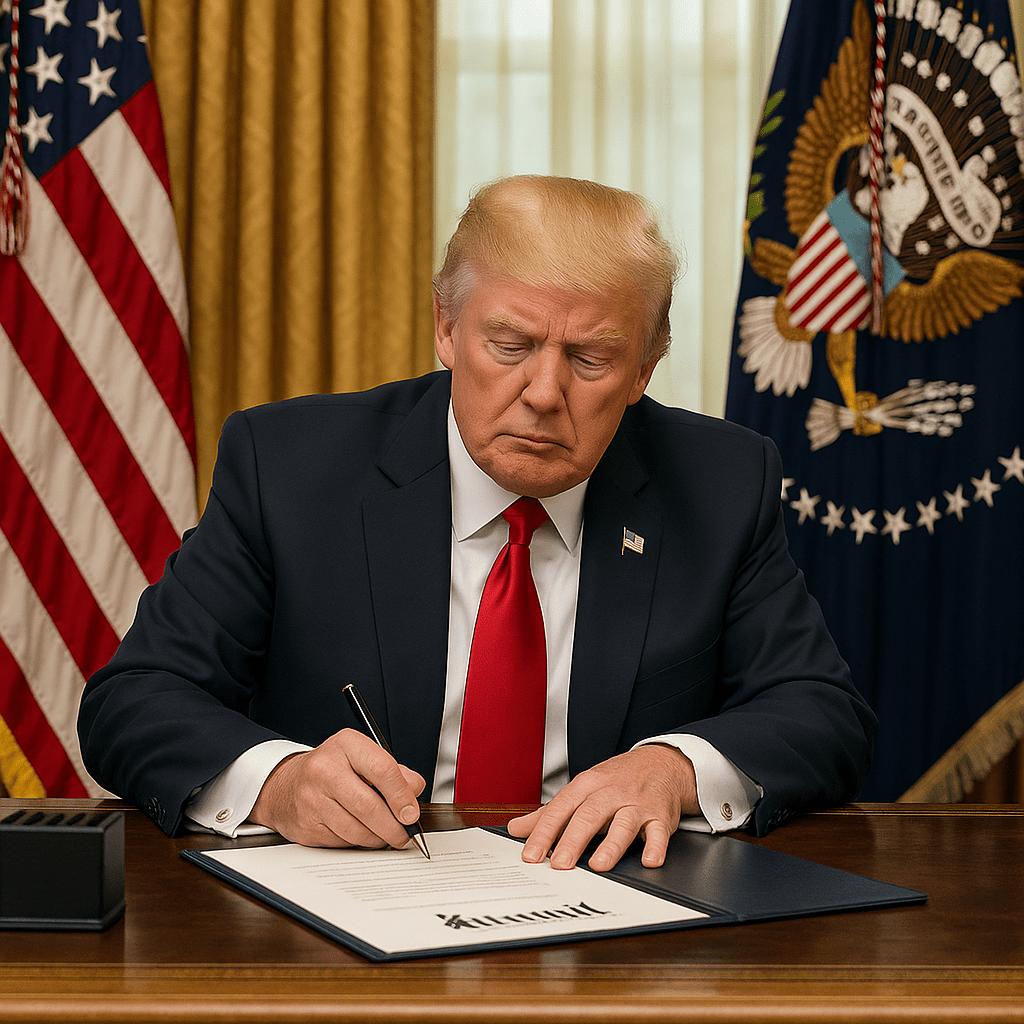President Donald J. Trump has signed an Executive Order aimed at streamlining federal regulations to bolster economic growth and enhance governmental efficiency. This directive mandates that for every new regulation introduced, at least ten existing regulations must be identified for elimination. The objective is to alleviate the cumulative burden of federal regulations on businesses and individuals, thereby fostering a more dynamic economic environment.
The Executive Order assigns the Director of the Office of Management and Budget (OMB) the responsibility to ensure that the total incremental cost of all new regulations, including those repealed, is significantly less than zero for the fiscal year 2025. This approach is designed to promote prudent financial management and reduce unnecessary regulatory burdens.
In addition to the 10-to-1 deregulation initiative, the administration has established the Department of Government Efficiency (DOGE), led by Elon Musk and Vivek Ramaswamy. This department is tasked with reducing government overreach, regulation, and excessive spending. The administration has set an ambitious goal of cutting government spending by $2 trillion per year, aiming to streamline operations and eliminate inefficiencies.
The Executive Order also directs agency heads, in coordination with their DOGE team leads and the OMB, to review all regulations under their jurisdiction. The focus is on identifying rules that impose heavy costs and may be inconsistent with the law or the administration’s policy. Agencies are instructed to develop a Unified Agenda to rescind or modify such regulations, ensuring that enforcement actions align with statutory authority and constitutional powers.
To further safeguard American innovation, President Trump has issued a memorandum directing the United States Trade Representative (USTR) to renew investigations into digital service taxes (DSTs) imposed by foreign governments. These taxes are viewed as discriminatory against U.S. companies operating abroad. The administration is considering responsive actions, such as tariffs, to counteract these measures and protect the U.S. tax base.
In the realm of artificial intelligence (AI), the administration has shifted its approach by revoking previous executive orders that emphasized oversight and risk mitigation. The new directive, titled “Removing Barriers to American Leadership in Artificial Intelligence,” prioritizes rapid innovation and reduced regulatory constraints. Federal agencies are instructed to review and potentially suspend, revise, or rescind actions stemming from previous directives that conflict with the new policy objectives. The order emphasizes the development of AI systems free from ideological bias or engineered social agendas.
While these initiatives aim to reduce regulatory burdens and promote economic growth, they also necessitate careful implementation to ensure that essential protections remain intact. The administration’s commitment to deregulation is evident, and with time and dedicated effort, the intended benefits of these policies are expected to materialize.
—
Tom Blake writes on markets, trade policy, and the government’s role in private enterprise. He studied economics at George Mason University and spent six years as a policy advisor for a business coalition before turning to financial journalism. His work examines the real-world impact of regulations, subsidies, and federal economic planning.



